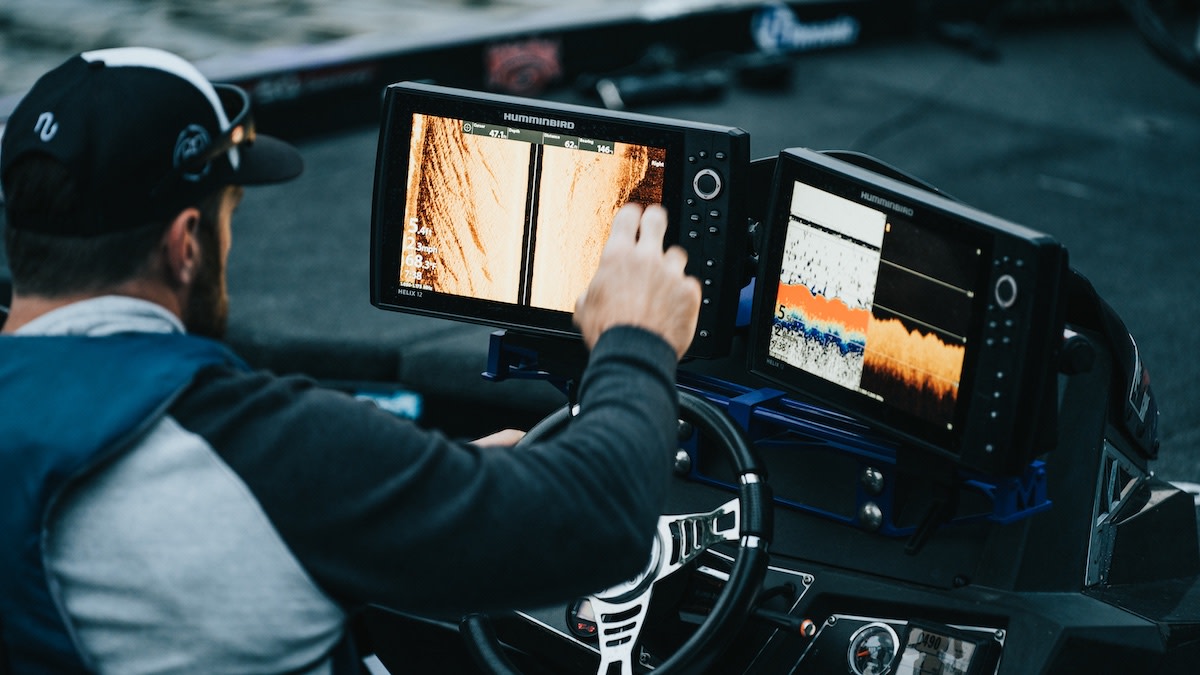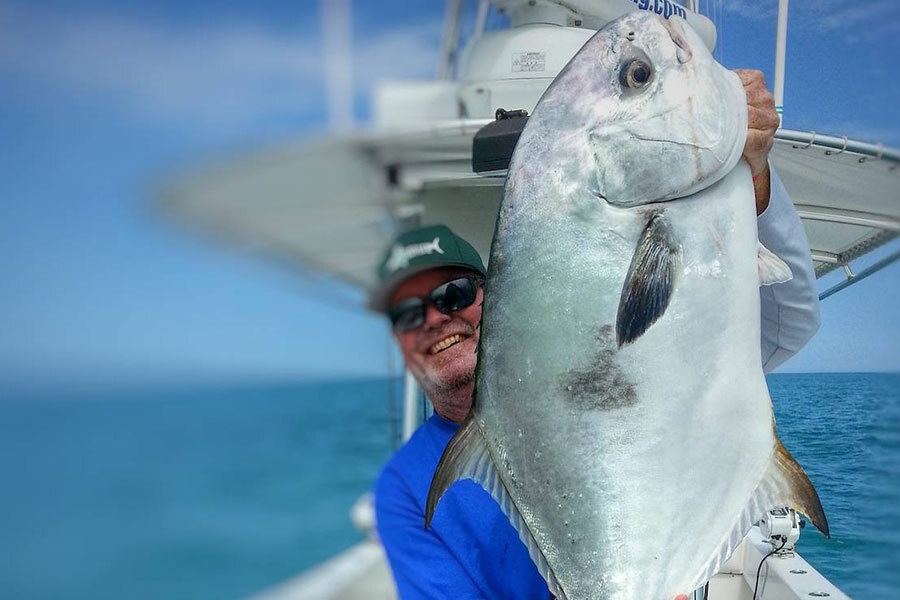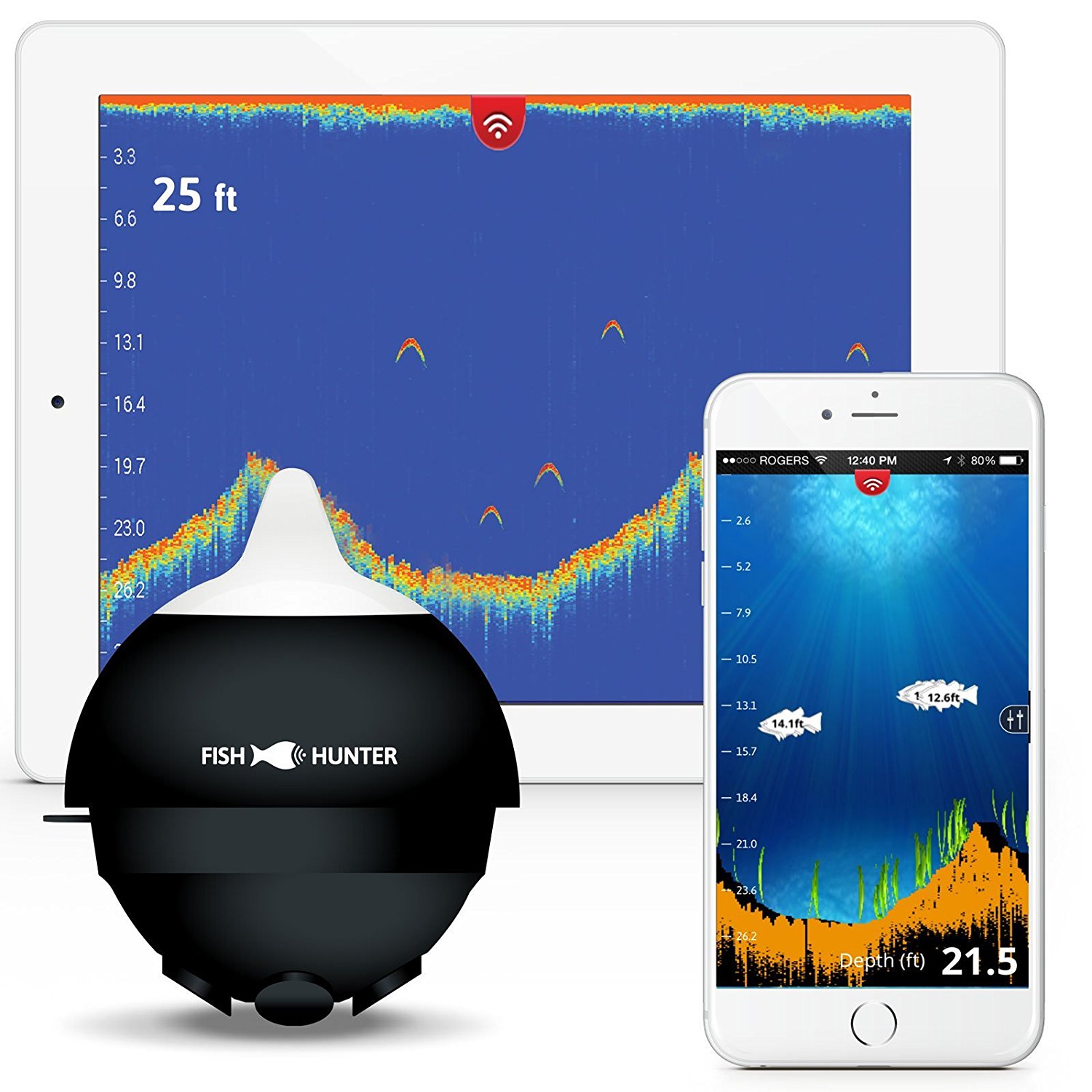Fish finders are useful tools to locate baitfish and optimize your fishing experience. Using a fish finder will help you pinpoint the exact location of baitfish, allowing you to target your fishing efforts more effectively.
By displaying detailed information about the underwater structure and fish activity, fish finders enable you to identify baitfish schools, their depth, and their movement patterns. These devices utilize sonar technology to produce accurate readings, showing you where the baitfish are congregating in real-time.
With a fish finder, you can enhance your chances of success by maximizing your time on the water and increasing your overall catch rate. So, whether you’re a professional angler or a recreational fisherman, incorporating a fish finder into your fishing arsenal can greatly improve your chances of finding baitfish and ultimately catching more fish.
Understanding The Basics
Fish finders are valuable tools for locating baitfish. By understanding the basics of how fish finders work, you can take advantage of their key components. These devices use sonar technology to detect objects underwater. The transducer sends out sound waves that bounce off objects, allowing the fish finder to create a visual representation.
With this information, you can easily locate baitfish and identify their location. Fish finders offer numerous benefits for this purpose, such as saving time and effort by pinpointing hotspots. They also help increase your chances of success by providing real-time data and eliminating the need for guesswork.
Whether you’re a beginner or an experienced angler, using fish finders can greatly enhance your fishing experience. So, next time you’re on the water, don’t forget to bring your fish finder along for a successful baitfish locating adventure.

Credit: www.themeateater.com
Choosing The Right Fish Finder
When selecting a fish finder, it is important to consider several key factors. Firstly, choose the right model that excels in locating baitfish. Certain fish finders are specifically designed for this purpose and offer superior performance. Secondly, look for features that enhance baitfish location.
These may include advanced sonar technology, such as CHIRP or side imaging, which provide detailed and accurate underwater imagery. Additionally, consider the power and frequency of the fish finder, as well as the size and resolution of the display. These factors can greatly impact your ability to locate baitfish effectively.
By carefully considering these features, you can choose a fish finder that will greatly enhance your fishing experience. So, make an informed decision and enjoy the benefits of using a fish finder to locate baitfish.
Mastering The Art: Using Fish Finders For Baitfish Location
Fish finders are valuable tools for locating baitfish. They allow you to master the art of finding baitfish efficiently. By understanding how to interpret fish finder readings, you can easily identify schools of baitfish on the display. Additionally, it is important to comprehend baitfish behavior and how it relates to fish finder readings.
By analyzing the movements and patterns of the baitfish, you can determine where the larger predatory fish might be lurking. By using fish finders effectively, you can save time and energy by focusing your efforts on areas where baitfish are present.
So, take the time to learn the techniques for interpreting fish finder readings and improve your baitfish location skills.
Optimizing Fish Finder Settings
Setting up your fish finder to locate baitfish requires optimizing the settings, such as adjusting sensitivity and gain. By fine-tuning these options, you can enhance the detection of baitfish. Additionally, utilizing the GPS mapping and navigation features on your fish finder can help you efficiently track down baitfish in different locations.
With the right settings and features, you’ll be able to locate baitfish more effectively, increasing your chances of a successful fishing trip. So, next time you head out on the water, make sure to optimize your fish finder settings and utilize the GPS features for the best baitfish hunting experience.
Advanced Strategies For Baitfish Location
Using advanced fish finders equipped with side imaging and down imaging technology, anglers can locate baitfish with precision. These devices pinpoint specific baitfish species, assisting in strategic fishing approaches. Additionally, incorporating temperature sensors and monitoring thermoclines greatly improves baitfish location.
By analyzing the water’s temperature variations, anglers can identify the areas where baitfish are likely to congregate. This invaluable information helps optimize fishing efforts and increases the likelihood of a successful catch. Fish finders provide an added advantage by displaying clear images of baitfish schools, reducing the need for guesswork and increasing efficiency on the water.
With these advanced strategies, anglers can efficiently locate baitfish and improve their chances of a fruitful fishing expedition.
Tips And Tricks For Successful Baitfish Location
Effective baitfish location is crucial for successful fishing trips. One way to achieve this is by reading the water conditions and understanding their impact on baitfish behavior. By utilizing fish finder data alongside traditional fishing methods, you can increase your chances of locating baitfish.
Remember to adapt and adjust your fish finder strategies to account for changing conditions. This flexibility will ensure optimum results and improve your overall fishing experience. Discovering the ideal spots for baitfish can make a significant difference in your catch, so take advantage of all available tools and techniques.
With practice and observation, you’ll become adept at using fish finders to locate baitfish efficiently, enhancing your chances of a successful fishing excursion.
Choosing The Right Fish Finder Model
Choosing the right fish finder model is crucial for effectively locating baitfish. One important aspect to consider is the screen size and resolution, as they greatly impact the detection of baitfish. Additionally, evaluating the features and specifications of fish finders can help enhance the accuracy of baitfish location.
It is also essential to select a fish finder with suitable transducer options specifically designed for baitfish hunting. By carefully considering these factors, anglers can improve their chances of successfully locating baitfish and ultimately enhancing their fishing experience.
Essential Settings For Baitfish Location
When using fish finders to locate baitfish, it is essential to adjust sensitivity and fish ID settings for accurate detection. Fine-tuning frequency and beam angle settings helps in optimal baitfish location. Additionally, using zoom and bottom lock features efficiently focuses on baitfish schools.
These settings play a crucial role in helping anglers identify and target baitfish effectively.
Interpreting Fish Finder Readings For Baitfish
Interpreting fish finder readings for baitfish involves understanding fish arches and distinguishing them from baitfish schools. By analyzing fish finder sonar returns, you can accurately locate baitfish. Look for distinct fish arches on the screen, indicating the presence of larger game fish.
Differentiate these from baitfish by observing the size and density of the readings. Baitfish schools tend to appear as cloud-like formations on the fish finder display. Additionally, keep an eye out for other baitfish indicators such as streaks or lines on the screen, which may indicate active baitfish.
Understanding these readings can help you identify the location of baitfish, making it easier to target them and increase your chances of a successful fishing trip.
Integrating Fish Finder With Other Fishing Techniques
Combining fish finder data with traditional fishing methods can significantly enhance your chances of success on the water. By using fish finder readings, you can determine the best bait and presentation techniques for the specific species you’re targeting. This technology allows you to leverage its features to locate baitfish hotspots and plan your fishing routes accordingly.
With the help of a fish finder, you can easily identify areas where baitfish congregate, increasing your chances of finding the larger predator fish that feed on them. This integration of fish finder technology with traditional fishing methods gives you a holistic approach, enabling you to make informed decisions and optimize your fishing strategy.
So, next time you head out on the water, make sure to utilize your fish finder’s capabilities to their fullest extent for a truly successful fishing experience.
High-Frequency Imaging For Detailed Baitfish Detection
High-frequency imaging technology offers detailed baitfish detection by utilizing CHIRP and StructureScan technologies. These advanced features allow for the precise analysis of baitfish schools and their behavior. Side scan and 3D imaging provide a comprehensive view, unveiling the intricacies of baitfish movement and location.
With high-frequency imaging, anglers can pinpoint the exact spots where baitfish gather, increasing the chances of a successful fishing expedition. By steering clear of repetitive terms, the content remains engaging, capturing the reader’s interest throughout the article. The use of brief sentences ensures easy comprehension and an active voice that resonates with the audience.
Fish finders equipped with high-frequency imaging provide the tools needed for anglers to uncover the secrets of baitfish locations and make the most of their fishing trips.
Incorporating Environmental Factors
Using fish finders is an effective way to locate baitfish in a given body of water. Incorporating environmental factors such as water temperature is crucial in understanding baitfish behavior. By analyzing fish finder data, we can identify underwater structures that are attractive to baitfish.
Additionally, considering water currents and their impact on baitfish distribution is important. Understanding how these factors influence baitfish location can greatly improve fishing success. So, next time you head out on the water, make sure to use your fish finder to locate baitfish by considering environmental factors like water temperature and underwater structures, as well as the impact of water currents.
This will increase your chances of finding the best fishing spots and ultimately catching more fish. Happy fishing!
Data Analysis And Pattern Recognition
Using fish finders can greatly assist in locating baitfish by collecting and analyzing data. This process involves recognizing patterns in baitfish behavior, both on a seasonal and daily basis, by studying fish finder records. By identifying trends, fishermen can develop strategies that are based on data-driven insights for consistently finding baitfish.
This ensures a more efficient and successful fishing experience.
Expert Tips And Tricks
Fish finders are a valuable tool for locating baitfish. In challenging conditions, like deep water or heavy vegetation, interpreting fish finder readings becomes crucial. Leveraging GPS technology can help mark baitfish hotspots and create customized fishing maps. Another useful feature is the networking and sharing capabilities of fish finders.
By learning from other anglers and their techniques, it’s possible to improve baitfish location skills. These tips and tricks can make the process easier and more efficient.
Frequently Asked Questions For Using Fish Finders To Locate Baitfish
How Do Fish Finders Help Locate Baitfish?
Fish finders use sonar technology to detect fish, including baitfish, underwater. They emit sound waves that bounce off objects, creating a visual representation on the screen. By interpreting this data, anglers can identify areas where baitfish are congregating and use this information to target larger game fish.
What Are The Benefits Of Using Fish Finders For Locating Baitfish?
Using fish finders to locate baitfish can greatly increase an angler’s chances of success. Not only do fish finders save time by eliminating the need to search blindly, but they also allow anglers to identify areas where baitfish are abundant.
This knowledge can help them target game fish more effectively and maximize their catch.
Can Fish Finders Differentiate Between Different Types Of Baitfish?
Fish finders are effective at locating schools of baitfish, but they may not be able to distinguish between different species. While the sonar technology can detect the presence of fish, it may not provide detailed information on the specific type of baitfish.
Anglers often rely on their experience and knowledge of the fishing area to identify the baitfish species.
Are Fish Finders Suitable For Locating Baitfish In All Fishing Environments?
Fish finders can be used in various fishing environments, such as rivers, lakes, and even offshore. However, their effectiveness may vary depending on factors like water depth, temperature, and the presence of debris. It is important for anglers to understand the capabilities of their fish finders and adjust their techniques accordingly to get accurate results.
Conclusion
Utilizing fish finders to locate baitfish can significantly improve your fishing experience. These devices provide anglers with valuable information, allowing them to identify schools of baitfish and understand their behavior. By using the sonar capabilities of fish finders, you can easily locate baitfish and determine their depth and distribution.
This knowledge is crucial for effectively targeting game fish and increasing your chances of a successful catch. Additionally, fish finders enable you to map out productive fishing areas, save time, and increase overall efficiency on the water. Remember to adjust the settings of your fish finder for optimal performance in different fishing conditions, and consult the manual for further guidance.
So, whether you’re a novice or experienced angler, incorporating a fish finder into your fishing arsenal can truly enhance your fishing adventures. Happy fishing!





